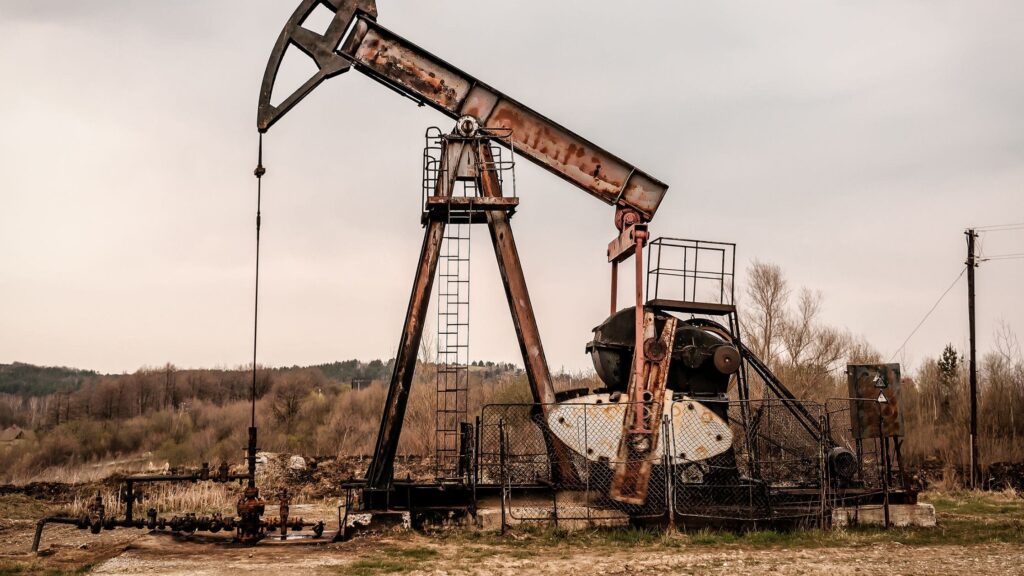The intricate landscape of Kansas mineral rights, a complex and valuable aspect of property ownership in the Sunflower State, presents both opportunities and challenges for landowners, investors, and industry professionals. This extensive guide delves into the nuances of Kansas mineral rights, offering a comprehensive overview of their definition, management, and value.
How are Mineral Rights in Kansas Defined?

In Kansas, a state rich with natural resources, mineral rights are defined as the legal entitlement to explore, extract, and profit from the minerals beneath a piece of land. These rights can be owned separately from the surface rights, creating a unique dynamic between the surface owner and the mineral rights owner. The concept of mineral rights in Kansas encompasses a variety of resources, including oil, natural gas, coal, and other subsurface minerals.
Understanding the definition of mineral rights in Kansas is crucial for you, whether you’re a landowner, an investor, or someone interested in the state’s natural resources. The ownership of these rights can significantly impact the value and use of the land.
In the Sunflower State, the mineral estate, or the underground component of property rights, is often considered dominant over the surface estate. This means that if you own mineral rights, you typically have the authority to use the surface land as necessary for mineral exploration and extraction, subject to certain legal restrictions and agreements.
What is the Difference Between Surface Rights and Mineral Rights in Kansas
The distinction between surface rights and mineral rights in Kansas is a pivotal aspect of land ownership. Surface rights refer to the control of the land’s surface, including the right to build structures and grow crops. On the other hand, mineral rights pertain specifically to the subsurface portion of the property and the right to extract minerals.
In many cases in Kansas, these rights are severed, meaning that one person can own the surface rights while another owns the mineral rights. This division can lead to complex situations, particularly when mineral rights are exercised. If you’re a surface owner, it’s vital to understand that mineral rights owners or lessees have certain entitlements to access and use your land for mineral exploration and production.
What are the Major Oil and Gas Fields in Kansas?
Kansas, a state known for its significant contribution to the U.S. oil and gas sector, hosts several major fields that have been pivotal in the development of its natural resources. Understanding these fields is essential for anyone involved in the Kansas oil and gas industry.
Before delving into the list of major fields, it’s important to recognize that the extraction and development of these resources play a critical role in the state’s economy. The Kansas Geological Survey and other agencies provide invaluable data and support in managing these resources.
Hugoton Gas Field:
Located in the southwestern part of Kansas, the Hugoton field is one of the largest natural gas-producing areas in North America. It extends into Oklahoma and Texas, highlighting its vast geographical footprint.
Mississippian Lime: This oil-rich field, predominantly situated in the southern part of Kansas, is known for its porous limestone formation that stores significant oil reserves.
Elk City Field: Found in Montgomery County, this field is notable for its oil production and has been a significant contributor to the state’s oil output.
Stafford Field: Located in Stafford County, this field is recognized for both oil and gas production, contributing to the diverse energy portfolio of Kansas.
Fairport Field: Nestled in Russell County, Fairport is primarily an oil-producing field, with a history of substantial oil extraction.
What are the Main Minerals Found in Kansas?
Kansas, a state with a rich geological tapestry, is home to a variety of minerals that not only contribute significantly to its economy but also play a vital role in various industries. Understanding these minerals is essential for you if you’re exploring mineral rights or simply interested in the natural wealth of Kansas.
Lead and Zinc:
Primarily found in the Southeastern region of Kansas, these minerals have historically been the backbone of local mining industries. The Tri-State district, particularly around Galena and Baxter Springs, is well-known for these deposits.
Salt: Central Kansas, especially around Hutchinson, boasts extensive salt mines. The salt deposits in this region are part of a larger formation that extends into other states, and they have been a significant part of the state’s mining history.
Gypsum: Used in the production of plaster and drywall, gypsum deposits are abundant in the central counties of Kansas. Places like Barber and Comanche counties have notable gypsum resources.
Helium: Although not a mineral in the traditional sense, helium is a valuable resource extracted alongside natural gas in Kansas, particularly in the Hugoton field, which is one of the largest sources of helium in the United States.
Limestone: Abundant in the Flint Hills region, limestone is extensively quarried in Kansas for building materials and aggregate for construction.
Coal: Eastern Kansas has historical coal mining areas, though the state’s coal production is modest compared to its other mineral resources.
How do You Find Out Who Owns Mineral Rights in Kansas?
Determining who owns mineral rights in Kansas is a critical step for anyone involved in land transactions, oil and gas leasing, or mineral exploration. Here’s a step-by-step guide:
Visit the County Clerk’s Office:
The county clerk’s office holds property records, including deeds and leases, that can provide information on mineral rights ownership.
Conduct a Title Search: A thorough title search of the property in question will reveal the history of ownership, including any transfers of mineral rights.
Consult with a Landman or Attorney: These professionals specialize in researching land titles and can be invaluable in deciphering complex ownership histories.
Review Geological Survey Records: The Kansas Geological Survey may have information regarding mineral rights and drilling activities in the area.
How do You Search for Mineral Rights Records in Kansas?
To effectively search for mineral rights records in Kansas, follow these steps:
Start with the Legal Description of the Land:
This description is necessary to identify the specific parcel of land in county records.
Access County Records: Most counties have records available online, but visiting the county clerk’s office may be necessary for a more comprehensive search.
Look for Deeds and Leases: These documents can provide information about the transfer and leasing of mineral rights.
Utilize Online Resources: Websites like the Kansas Register of Deeds can offer access to some records and are a good starting point for your search.
How Do You Claim Mineral Rights in Kansas?
Claiming mineral rights in Kansas is a process that involves several specific steps. If you’re considering staking a claim to mineral rights, here’s what you need to know:
Research Property History:
Begin by thoroughly researching the history of the property to determine if the mineral rights are available for claim.
Review County Records: Check county records for any existing claims or leases on the mineral rights.
Title Search: Conduct a detailed title search to confirm ownership status of the mineral rights.
Legal Documentation: Prepare and file the necessary legal documents, such as a mineral deed or a claim, with the county recorder’s office.
Consult with Experts: Consider consulting with a lawyer or a landman who specializes in mineral rights to ensure all legal requirements are met.
This process can be intricate, and it’s crucial to understand each step thoroughly to successfully claim mineral rights in Kansas.
How Does Mineral Rights Inheritance Work in Kansas?
Inheritance of mineral rights in Kansas is an aspect of estate planning that requires careful consideration. Mineral rights, like other forms of property, can be passed down to heirs or designated beneficiaries. Here’s a closer look at how this process works:
Will or Trust:
If the deceased has a will or trust, the mineral rights are distributed according to the directives specified therein.
Probate Process: In the absence of a will, mineral rights are subject to the state’s probate process, which determines the legal heirs.
Transfer of Ownership: The heirs or beneficiaries must then legally transfer the mineral rights into their names. This often involves filing a new deed with the county where the property is located.
Consider Tax Implications: Inheritors of mineral rights should also consider any tax implications, including estate taxes and potential income from the rights.
Understanding the intricacies of inheriting mineral rights in Kansas is crucial, especially considering the potential value and legal responsibilities involved.
What Happens to Kansas Mineral Rights When Someone Dies?
When a person owning mineral rights in Kansas passes away, these rights are typically transferred to their heirs or as dictated by their will. The transfer process often involves probate, where the will is validated, and the rights are legally passed to the beneficiaries. This transition can be complex, necessitating careful legal and tax considerations.
Do You Have to Pay Taxes on Mineral Rights in Kansas?
In Kansas, owning mineral rights does come with tax responsibilities. It’s crucial for you, as a mineral rights owner or potential investor, to understand these obligations. Here’s a breakdown of the tax implications:
Property Taxes:
Mineral rights are considered real property in Kansas and are subject to property taxes. The value of the mineral rights is assessed based on the potential and actual production of the minerals.
Income Taxes: If your mineral rights generate income through leasing or production, this income is subject to state and federal income taxes.
Severance Taxes: Kansas imposes a severance tax on the extraction of natural resources. For oil and gas, this tax is a percentage of the gross value of the production.
Ad Valorem Tax: In some cases, an ad valorem tax may apply to the equipment used in mineral extraction.
Mineral rights taxes reflect the state’s approach to managing its natural resources and ensuring that the exploitation of these resources contributes to the overall welfare of Kansas.
How Much are Mineral Rights Worth in Kansas?
The value of mineral rights in Kansas is influenced by several factors including location, market conditions, the type of minerals, and the stage of production. As of the latest information:
Non-producing or Non-leased Mineral Rights:
These typically have the lowest value. If you own mineral rights that don’t generate a monthly royalty check and haven’t been leased in the last five years, they fall into this category. In Kansas, such rights may range from $0 to a few hundred dollars per acre.
Leased Mineral Rights: When a property is leased, it indicates that an operator is interested in drilling, thereby raising the mineral rights’ value. In Kansas, leased mineral rights can be valued at 2-3 times the lease bonus amount.
Producing Mineral and Oil Rights: If you receive a monthly royalty check, you own producing mineral rights. These are typically valued higher, especially in Kansas where oil and gas royalties are notably valuable compared to other states.
Additionally, recent listings for properties with mineral rights in Kansas show a wide range of values. The average listing price for these properties is around $1,255,000 with an average price per acre of approximately $4,000. It’s important to note that these figures can vary widely based on the specific details and potential of each property.
How Much are Mineral Rights Worth per Acre in Kansas?
Based on the recent market listings, the average price per acre for properties with mineral rights in Kansas is around $4,000. This value, however, is an average and can differ significantly depending on the specific characteristics and potential of the land in question, including factors like location, mineral type, production stage, and market conditions.
How Do You Buy Mineral Rights in Kansas?
Purchasing mineral rights in Kansas can be a strategic investment. If you’re considering this, here are actionable and logical steps to follow:
Research Potential Properties:
Begin by identifying areas in Kansas where you wish to own mineral rights. Utilize resources like the Kansas Geological Survey for valuable geological information.
Check Mineral Rights Availability: Ensure the mineral rights are available for purchase. This might require a title search to ascertain the current owner.
Consult with a Landman: A landman can assist in locating available mineral rights, negotiating terms, and understanding the legalities.
Conduct Due Diligence: Investigate the history of the mineral rights, including any previous or current leases and production records.
Negotiate Terms: Once you’ve found mineral rights you wish to purchase, negotiate terms with the seller.
Prepare Legal Documents: Draft and execute a mineral deed or a purchase agreement. This should be done with the help of a legal professional.
File with County Clerk: Register the transfer of mineral rights with the county clerk in the county where the property is located.
How To Sell Your Mineral Rights in Kansas?
Selling mineral rights in Kansas requires an understanding of the market and the legal process. Here’s a guideline to assist you:
Assess the Value:
Determine the value of your mineral rights. This may involve appraising the property’s potential for production and reviewing current market conditions.
Market Your Mineral Rights: You can choose to list your mineral rights with a broker or market them independently.
Review Offers: Carefully consider any offers you receive, keeping in mind the value and potential of your mineral rights.
Due Diligence by Buyer: Expect the buyer to conduct due diligence, which may include a title search and review of any existing leases or production records.
Negotiate the Sale Terms: Once you have a potential buyer, negotiate the terms of the sale, including the price and transfer process.
Legal Documentation: Prepare the necessary legal documents, such as a mineral deed, to formalize the sale. It’s advisable to have these documents reviewed by a legal professional.
Close the Deal: Finalize the sale by signing the deed, and ensure it’s filed with the county clerk in the county where the property is located.
How Do I Transfer Mineral Rights in Kansas?
Transferring mineral rights in Kansas is a process that requires careful attention to legal details. If you’re looking to transfer mineral rights, here are the steps to follow:
Verify Ownership:
Ensure that the mineral rights are in your name and that you have the legal right to transfer them.
Draft a Mineral Deed: A mineral deed is required to legally transfer mineral rights. It should include a description of the property, the rights being transferred, and the terms of the transfer.
Have the Deed Notarized: Once the deed is prepared, have it notarized to validate its authenticity.
File the Deed with the County Clerk: Submit the notarized deed to the county clerk’s office in the county where the property is located. This officially records the transfer.
Notify Interested Parties: Inform any lessees or operators working on the property about the transfer of rights.
Consult an Attorney: Consider consulting with an attorney specializing in mineral rights to ensure the transfer is executed properly.
For more detailed information and practical tips check our guide on how to transfer the ownership of mineral rights.
FAQs
Do Mineral Rights Expire in Kansas?
In Kansas, mineral rights do not expire simply due to the passage of time. However, if mineral rights are not actively used or leased for a certain period, typically 20 years, they may revert to the surface owner under the Dormant Mineral Act. It’s important to actively manage and maintain mineral rights to prevent potential loss of ownership.







